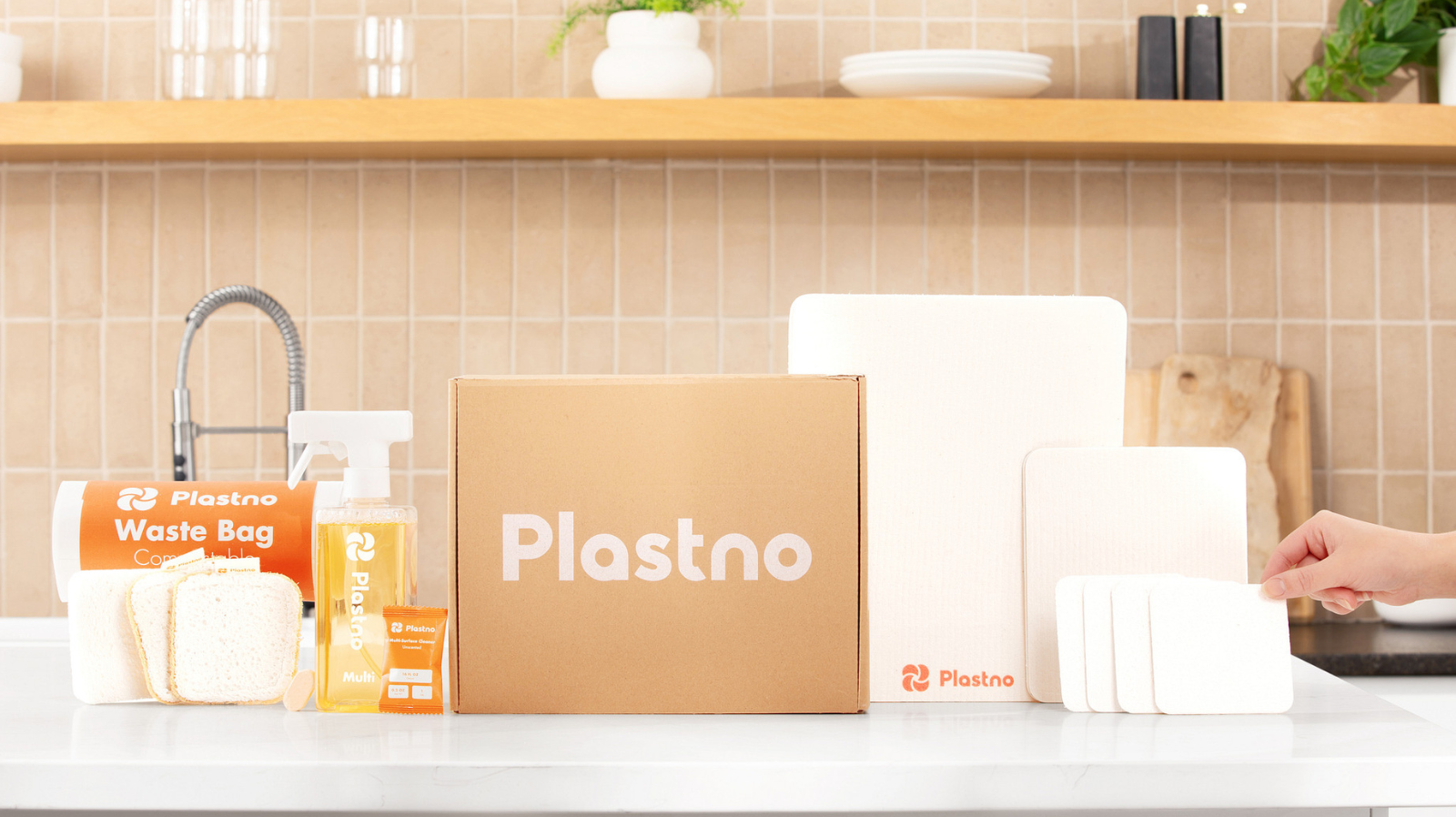Our Top Picks
Green Hive is reader-supported. When you purchase through links on our site, we may earn an affiliate commission. To understand our thorough approach to rating brands and products, explore our comprehensive methodology.
Our Top Picks
Green Hive is reader-supported. When you purchase through links on our site, we may earn an affiliate commission. To understand our thorough approach to rating brands and products, explore our comprehensive methodology.
Key takeaways
- Though a polymer, silicone is not the same as plastic
- Silicone is a highly versatile and durable material
- While not biodegradable, silicone presents a more environmentally conscious choice compared to plastic
Introduction
Silicone, a versatile material with a myriad of applications, has found its way into our lives in more ways than we might realize. From kitchen utensils to medical devices, from consumer electronics to construction materials, silicone's presence is pervasive. However, hidden beneath its remarkable utility lies a perplexing question that has sparked debates and curiosity among many: Is silicone a type of plastic or an entity entirely distinct?

With the inherent problems associated with plastic, many are looking at silicone as an alternative. For instance, stat shows more than 90% of plastic isn’t recycled. The plastic waste end up polluting the environment. But is silicone a more viable alternative that effectively puts paid to the known health hazards of plastic products? This article unwraps the enigma of silicone's true nature. It strips away the myths and cuts through the confusion by exploring the chemical composition and properties peculiar to silicone.
What is silicone?
Silicone is a synthetic polymer composed of repeating units of siloxane, which consists of silicon, oxygen, carbon, and hydrogen atoms. It is created through a chemical process that involves combining silicon (derived from silicone dioxide, commonly found in sand) with organic compounds. The resulting material is a highly versatile and flexible substance known as silicone.

Pure silicone is a specific form of silicone that contains only silicon, oxygen, carbon, and hydrogen atoms without additional additives or impurities. This composition gives pure silicone its distinctive properties, such as excellent thermal stability, biocompatibility, and resistance to UV radiation and weathering.
Silicone's unique molecular structure contributes to its remarkable characteristics. The backbone of siloxane, consisting of alternating silicon and oxygen atoms, provides flexibility and elasticity to the material, allowing it to bend and stretch without losing its shape. Moreover, the presence of organic side groups in silicone molecules determines its specific properties, such as hardness, softness, and temperature resistance. Unlike many plastics, silicone can endure extreme heat and cold without losing its elasticity or structural integrity. This property makes it invaluable for applications in the aerospace, automotive, and electronics industries.
Silicone vs silicone rubber: the difference
In our bid to demystify silicone, it is important to clarify the difference between silicone and silicone rubber. Both silicone and silicone rubber are composed of siloxane chains, but silicone rubber has undergone a cross-linking process to give it its rubber-like properties.
In addition, silicone is available in various forms, including liquids and gels, and can have different consistencies depending on its application. Silicone rubber, on the other hand, is specifically engineered to be flexible, elastic, and able to recover its original shape after deformation. Silicone has a broader range of applications due to its various forms, such as lubricants, adhesives, and even personal care products like shampoos and cosmetics.
Silicone rubber is primarily used in sealing and gasketing applications, where its flexibility and resistance to deformation are crucial. Overall, silicone is a general term that encompasses various forms of the material, while silicone rubber specifically refers to a cross-linked form of silicone with rubber-like properties.
Advantages of silicone
Silicone offers several advantages over traditional plastics, making it a preferred material for various applications. Below, we explore some if these advantages.
Temperature resistance
Silicone's exceptional temperature resistance is a defining advantage that sets it apart from many plastics. While traditional plastics can exhibit significant changes in physical properties when exposed to extreme temperatures, silicone remains stable and maintains its functionality across a wide temperature range.
At low temperatures, silicone retains its flexibility and elasticity, unlike many plastics that become brittle and prone to cracking or shattering. This resilience is particularly valuable in cold environments, such as in polar regions or in applications where exposure to freezing temperatures is common, like refrigeration systems or outdoor equipment.
Biocompatibe and safe
Silicone is biocompatible, hypoallergenic, and generally considered safe for medical and food-contact applications. It does not leach harmful chemicals; this makes silicone safe and suitable for medical devices, baby products, and kitchenware.
Highly durable
Silicone's exceptional durability is a standout advantage that makes it an attractive alternative to plastic. Unlike many plastic products that may have a limited lifespan, silicone items can withstand prolonged use and retain their functionality over extended periods, significantly reducing the need for frequent replacements and disposal.

The longevity of silicone products is particularly evident in everyday household items. For example, silicone kitchenware and bakeware, such as silicone spatulas, baking molds, and food storage containers, can endure countless uses without showing signs of wear or damage. Unlike plastic alternatives that may warp, crack, or scratch after repeated use, silicone maintains its smooth surface and flexibility, making it reliable for years.
Environmental consideration
While silicone is not biodegradable, it can be recycled. When used as an alternative to plastic, its durability can lead to reduced plastic waste generation. Additionally, some silicone products can be reused or repurposed, contributing to sustainability efforts.
Ultimately, the longer you use silicone products as an alternative to plastic products, the longer you keep potential pollutants out of the environment.
Disadvantages of silicone
While silicone offers numerous advantages, it also has some disadvantages that should be considered for specific applications. Let’s assess some of these disadvantages.
It is not biodegradable
The biggest issue about wholly replacing plastic with silicone is its non-biodegradability. While its durability means it can be used for longer without turning into waste, silicone's non-biodegradability is a disadvantage. The material does not break down naturally in the environment. As a result, discarded silicone products can contribute to long-lasting waste accumulation, potentially leading to environmental pollution and challenges in waste management.
It is expensive
Silicone can be more expensive than other materials, such as traditional plastics or rubber. The production process and specialized formulations contribute to its higher cost, which may limit its use in some cost-sensitive applications.
It has low tensile strength
Silicone's low tensile strength is a disadvantage because it limits its ability to withstand pulling or stretching forces. In applications where high load-bearing capacity is required, silicone may not be as suitable as materials with higher tensile strength. This limitation may restrict its use in certain structural or heavy-duty applications that demand robust mechanical properties.
Categories of silicone products we use
The versatility of silicone makes it useful in different facets of our regular lives. From the kitchen to medical facilities, silicone can be very useful.
Food grade silicone and silicone cookware
Silicone cookware, made from food-grade silicone, offers safe and versatile kitchen products like baking molds, spatulas, and silicone oven mitts. These cookware and kitchen utensils are typically more durable than traditional plastic cookware, With excellent heat resistance and non-stick surfaces, these items simplify cooking and enhance kitchen safety.
Food storage containers and utensils are also part of this category, providing airtight and non-reactive solutions for food preparation and storage. Durable and reliable, silicone cookware has become a popular choice among home cooks and chefs alike easily replacing single-use and reusable plastic containers.
Medical grade silicone
Medical-grade silicone is a specialized type that meets strict regulatory standards for medical use. It is biocompatible, non-toxic, and non-allergenic, ensuring safety for implants and surgical instruments. Resistant to sterilization methods, it finds applications in implants, catheters, and wound dressings, contributing to improved patient care.
Silicone used for automotive, sealants, and adhesives
In the automotive industry, silicone is used in a variety of applications. Silicone gaskets are used to seal joints and gaps in automotive components. They are often used in engines, transmissions, and other parts of the vehicle. Silicone seals are used to prevent fluids from leaking from automotive components. They are often used in oil pans, coolant reservoirs, and other parts of the vehicle.
FAQs
Is silicone really safer than plastic?
Silicone is generally considered safer than many plastics due to its non-toxic, non-reactive, and heat-resistant properties. However, the safety of any material depends on its specific formulation, intended use, and adherence to regulatory standards.
Is silicone environmentally friendly?
Silicone is not inherently environmentally friendly because it is not biodegradable. It does not break down naturally in the environment, which can lead to long-lasting waste accumulation. However, silicone's durability and ability to be reused and recycled in some cases contribute to its potential for reduced waste generation and extended product lifespans, which can be considered environmentally advantageous compared to single-use plastics.

Additionally, advances in recycling and sustainable manufacturing practices can further improve silicone's environmental impact.
Does silicone turn into microplastics?
No, silicone does not turn into microplastics. Microplastics are small plastic particles that result from the breakdown of larger plastic items or from the degradation of certain plastic materials over time. Unlike plastics, silicone is not made from petroleum-based polymers; instead, it is a synthetic polymer composed of silicon, oxygen, carbon, and hydrogen atoms. Silicone is chemically inert and does not degrade in the same way that plastics do. It does not break down into microplastics or release harmful microplastic particles into the environment.
Is silicone harmful to the body?
No, silicone is generally considered safe for use in the body. Medical-grade silicone, which meets strict regulatory standards for biocompatibility, is commonly used in various medical and healthcare applications, including implants, prosthetics, and medical devices.

It is non-toxic, hypoallergenic, and does not elicit toxic or harmful responses when in contact with living tissues.
Is silicone vegan?
Yes, silicone is considered vegan. It is a synthetic material and does not contain any animal-derived ingredients. Silicone is produced through a chemical process that involves combining silicon with organic compounds. As a result, it does not involve the use of animals or animal by-products in its production. Therefore, silicone is compatible with a vegan lifestyle and is often used in vegan-friendly products, such as kitchenware, personal care items, and medical devices.
Is silicone bad for babies?
Silicone is generally considered safe for babies when used in baby products that are specifically designed and manufactured for infant use. Medical-grade silicone is often used in baby products like pacifiers, bottle nipples, and teething toys due to its non-toxic and hypoallergenic properties.
Conclusions
In conclusion, silicone, often mistaken for plastic due to its similar appearance, is a distinct and versatile material with its own unique properties. While sharing some characteristics with plastic, silicone is not plastic. It is a synthetic polymer made from silicon, oxygen, carbon, and hydrogen, which gives it remarkable advantages like temperature resistance, flexibility, and biocompatibility.
Though not biodegradable, silicone stands as the lesser of two evils when compared to plastic. Its durability, reusability, and potential for recycling contribute to reduced waste generation, making it a more sustainable choice for various applications. Silicone's safety for use in medical devices, baby products, and kitchenware further adds to its appeal as a safer alternative to certain plastics.
A Whopping 91 Percent of Plastic Isn’t Recycled. (n.d.). https://education.nationalgeographic.org/resource/whopping-91-percent-plastic-isnt-recycled/
Health Canada. (2015, March 18). The safe use of cookware. Canada.ca. https://www.canada.ca/en/health-canada/services/household-products/safe-use-cookware.html#si

.png)











.png)
.png)




.svg)
